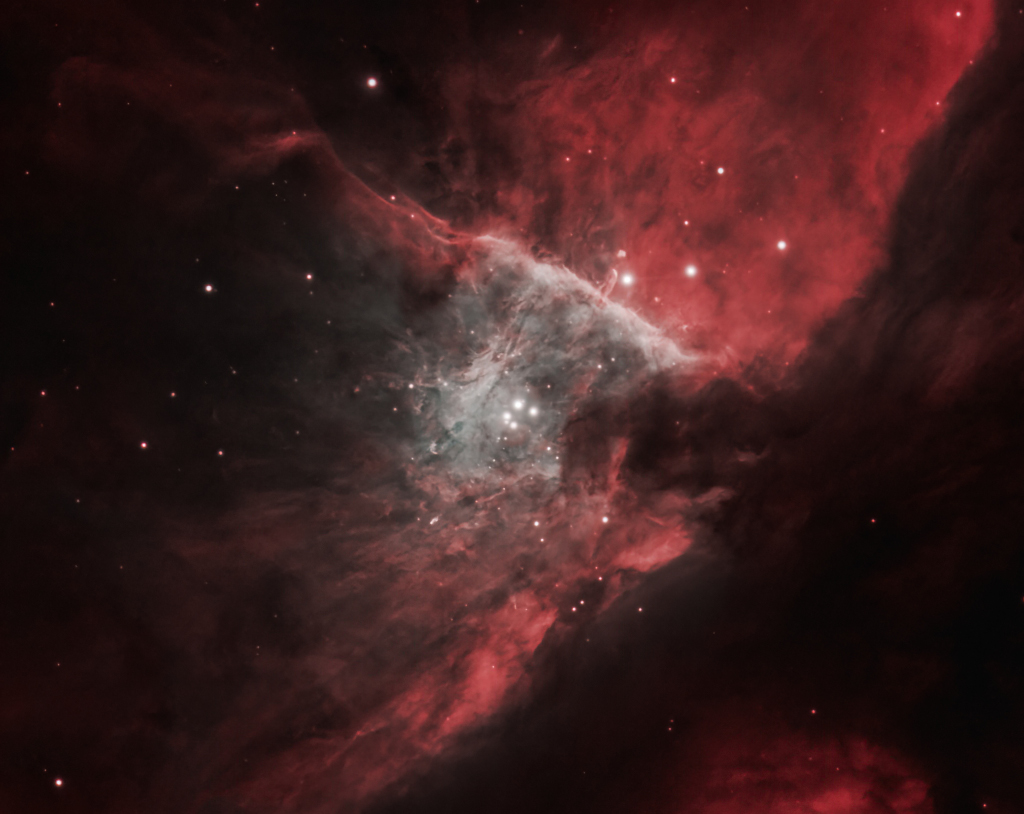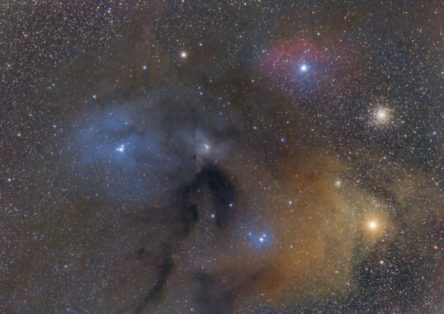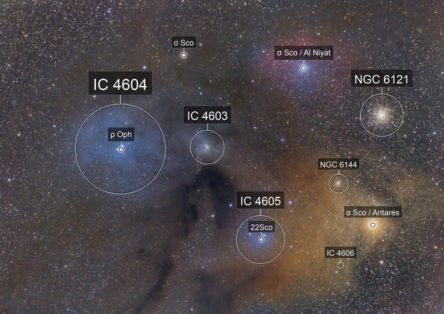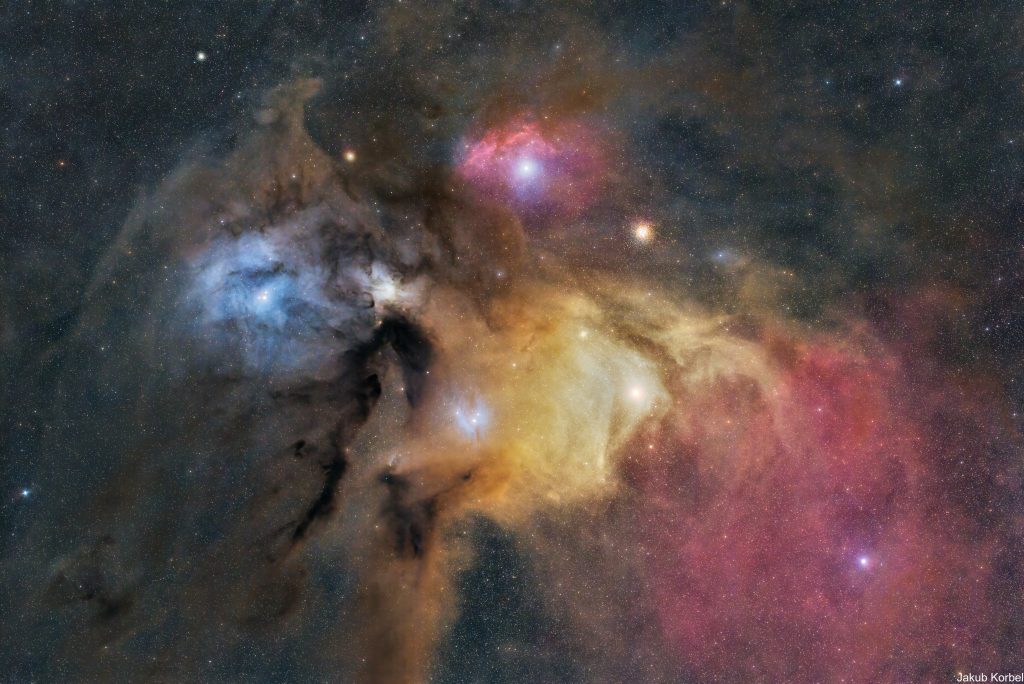johnnydeep wrote: ↑Fri Jan 05, 2024 6:48 pm
So, it says that Theta-1 Orionis C powers most of the nebula's glow via UV radiation, and that that star is 200,000 times the luminosity of the Sun. But the four Trapezium stars are in a volume 1.5 ly in radius, which implies that almost all the gas that's being ionized must now be many lightyears away, let's say at least 5+ ly. Five lightyears is - conveniently - about 200,000 AU. Is the radiation really strong enough to do that? The UV flux 5 ly from Theta-1 Orion C would be about the same as the UV flux of the Sun at 1 AU. Can the Sun's UV radiation ionize gas near the Earth?
Let's take a look at some of the stars in the Antares/Rho Ophiuchi region and consider why their nebulas are the way they are.
The stars are, clockwise from left, Rho Ophiuchi surrounded by a blue nebula, Sigma Scorpii surrounded by a partly red and partly blue nebula, Antares, surrounded by a yellow nebula, and 22 Scorpii, surrounded by a small blue nebula.
Let's look at another picture too, one which shows us an important star south of the Antares/Rho Ophiuchi complex, namely Tau Scorpii surrounded by a red nebula:
Consider the color of the nebulas and the temperatures of these stars:
1) Rho Ophiuchi: 21,000 K. Blue reflection nebula.
2) Sigma Scorpii: ~ 27,000 K. Faint red emission nebula and blue reflection nebula.
3) Antares: ~3,700 K. Yellow reflection nebula.
4) 22 Scorpii: 19,600 K. Blue reflection nebula.
5) Tau Scorpii: ~30,000 K. Red emission nebula.
Conclusion: Sigma Scorpii is spectral class B1. Stars cooler than Sigma Scorpii are unable to ionize a red emission nebula. But Tau Scorpii, which is spectral class B0.2, is hotter than Sigma Scorpii and definitely able to ionize an (admittedly faint) red emission nebula.
Rho Ophiuchi, 22 Scorpii and most definitely Antares are unable to ionize an emission nebula, because they are not hot enough. Antares is way, way too cool, but Rho Ophiuchi and 22 Scorpii are also too cool.
And the Sun, at 5,772 K, is way too cool, too. It is quite unable to ionize the Earth's atmosphere.
Ann
 Trapezium: At the Heart of Orion
Trapezium: At the Heart of Orion





